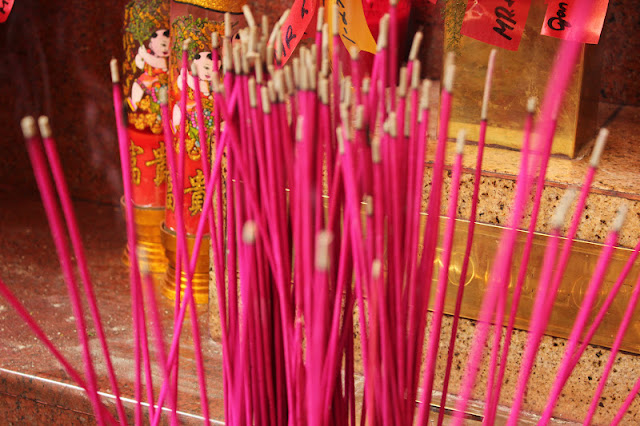The streets were congested almost like a little maze. There were arches with dragons to mark entry points. Chinese characters and chinky eyes, they were everywhere. It was like being In the Mood for Love until a sudden uproar broke the building up subtlety of the oriental culture. Loud cracks boomed everywhere as if there was an exchange of gunfire from unidentified terrorists and prospects. Suddenly, men carrying enormous and gaudy dragons in poles stole the scene. It’s not just any other 23rd day of January in Binondo, it was the Chinese New Year.
Dragon dance had been a long tradition in Chinese culture. It is performed by a dynamic team who will give life to the dragon by raising the pole up and down to which the dragon is attached. In the early times, dragons were made of wood, with bamboo hoops and were covered with rich fabrics. However the contemporary dancers have switched to lighter materials such as aluminium and plastics.
The dragon symbolizes great power and dignity in Chinese tradition. The emperors of ancient China have considered themselves as dragons of imperial authority. Usually, the dragon dance is accompanied by a pair of lions, which according to Buddhist symbolism; the lions are associated with power, regality and strength that would protect human beings from all forms of evil. The lion dance is only operated by two people whose faces are not seen compared to the dragon which needed a team to hold its length and the faces of the dancers remain visible.
There are performances where the dragon follows the direction of a dancer carrying a big ball wrapped in vibrant colors. According to Lawrence Chan, a resident tour guide in Binondo, the colorful ball symbolizes the earth. The dragon follows and protects the earth from evil spirits.
Dragon and lion dances are performed at New Year and also during special occasions to drive away evil spirits and bring good luck to the people especially to businesses. During the Chinese New Year in Binondo, before the business establishments started their transactions, owners first opened their doors to dragon dancers as they showcased a heart thumping performance accompanied by deafening drum rolls and tensing cymbals.
In some business establishments, owners already prepared a snakelike line-up of firecrackers which were lightened up in the middle of the dragon dance performance. As the firecrackers fired up the air, the dancers, despite the danger anchored within the explosive materials, continued with their performance as if they were invincible to the hazards that could cost their lives. The owners however and also the spectators just held their grounds not too far so as not to see a performance that is almost on the brink of life and death.
After their performance, the dancers holding the mouths of the lion reached for an ang pao, a small red envelope with luck money, a payment for the part of the dancers and an act that would invite prosperity for the part of the Chinese. Interesting enough, despite the dragon dance being of Chinese tradition, ironically, there wasn’t a single chinky-eyed Chinese holding a pole or finding himself or herself inside a lion mascot. All the performers were Filipinos: brawny, brown and sweating Filipinos who found themselves subjected to a foreigner’s tradition that in return could already make them subsist for a day or maybe two if the businessman is generous. Also there were children dancers whom in their young age have already their muscles stretched in holding the poles of dragons in exchange for money. These Filipino children whom, in their fresh consciousness would probably not have the slightest tinge of idea of how they have become early subjects of social stratification imbibed within their skins. Despite this triangular system of the Chinese being at the apex and the Filipinos bowing down below, a particular sight during the New Year at Binondo exhibited a morphing of the dragon dance tradition in the eyes and body rhythm of Filipinos. It was the performance of the homosexuals clad in a what appeared to be in a bordering costume of a manananggal and a tribal dancer.
While there were dragon dancers in front of business establishments, these homosexual dancers were on the streets blowing fires from their mouths and yelling to the intense beating of drums and tambourines. They had their own tribal street party which mirrored the origins of the early Filipino tribes: barefoot, yelling and dynamically rhythmic.



































No comments:
Post a Comment